Memories of our childhood: Toys of the 1930's by @mevilkingdom
Hi Steemians! As someone who is into collecting toys AND history I tought: Why not combine both? So I started a series in which I will talk about the history of toys. This time: 1930-1939!
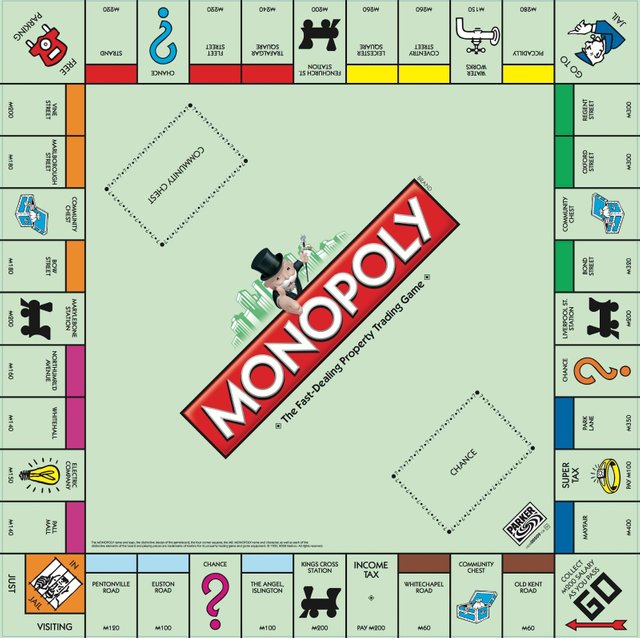
Monopoly first came out in 1935. It was based on 'the landlord's game', a board game very similar to monopoly that had been around since 1904. The original version of Monopoly was based on the streets of Atlantic City, New Jersey.
There have been some changes to the board since the original. Not all of the Chance and Community Chest cards as printed in the 1935 patent were used in editions from 1936/1937 onwards, and graphics with the Mr. Monopoly character were added in that same time-frame. A graphic of a chest containing coins was added to the Community Chest spaces, as were the flat purchase prices of all of the properties. Traditionally, the Community Chest cards were yellow (although they sometimes were printed on blue stock) with no decoration or text on the back, and the Chance cards were orange, likewise with no text or decoration on the back.
Fun fact: In 1941, the British Secret Intelligence Service made a special edition for World War II prisoners of war held by the Nazis. Hidden inside these games were maps, compasses, real money, and other objects useful for escaping. They were distributed to prisoners by British secret service-created fake charity groups.
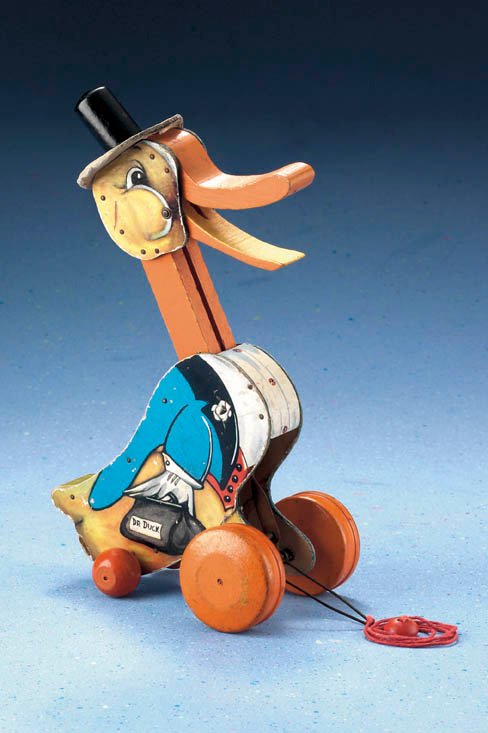
Fisher-Price was founded in 1930 by Herman Fisher, Irving Price, Margaret Evans Price, and Helen Schelle. Early toys were made of heavy steel parts and ponderosa pine, which resisted splintering and held up well to heavy use. The details and charm were added with colorful lithographic labels. Mrs. Price was the first Art Director and designed push-pull toys for the opening line, based on characters from her childrens books.
In 1931, three of the four founders took some of their wooden toys to the American International Toy Fair in New York City and they quickly became a success. The first Fisher-Price toy ever sold was "Dr. Doodle" in 1931.
Fisher-Price has created approximately 5,000 different toys since the early 1930s. One of Fisher-Price’s best-known lines is Little People toys, which includes people and animal figures along with various play sets such as a house, farm, school, garage and vehicles. The figures, which originally were wooden peg-style characters, are now molded of plastic and have detailed features
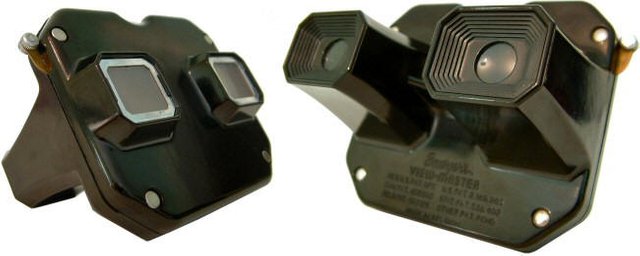
The view-master was first introduced in 1939 at the New York World's Fair. It was intended as an alternative to the scenic postcard, and was originally sold at photography shops, stationery stores, and scenic-attraction gift shops. The main subjects of View-Master reels were Carlsbad Caverns and the Grand Canyon.
The disk holds 14 film slides in seven pairs, making up the seven stereoscopic images. Two film slides are viewed simultaneously, one for each eye, thus simulating binocular depth perception.
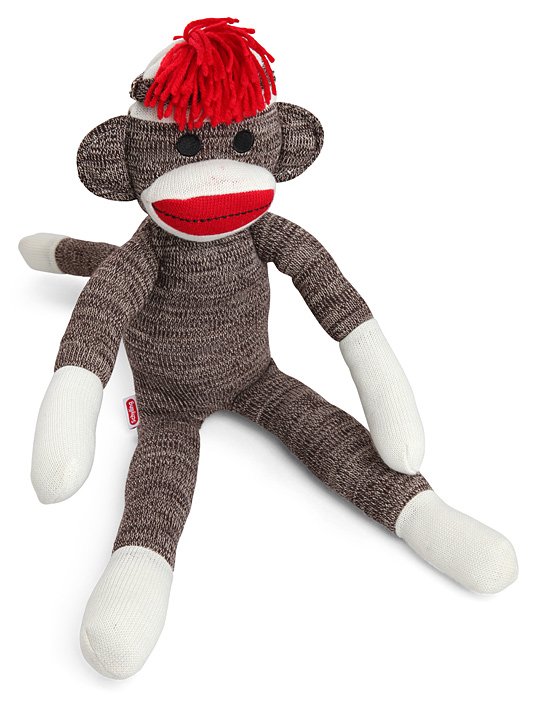
Sock Monkeys had been around since the victorian era but it wasn't until 1932 that the Nelson Knitting Company added the trademark red heel to its product. In 1932, advertising executive Howard Monk came up with an idea to change the heel of the brown sock from white to red. The red heeled sock was marketed as "de-tec-tip." Nelson Knitting added the red heel "De-Tec-Tip" to assure its customers that they were buying "original Rockfords" as opposed to the generic "Rockfords".
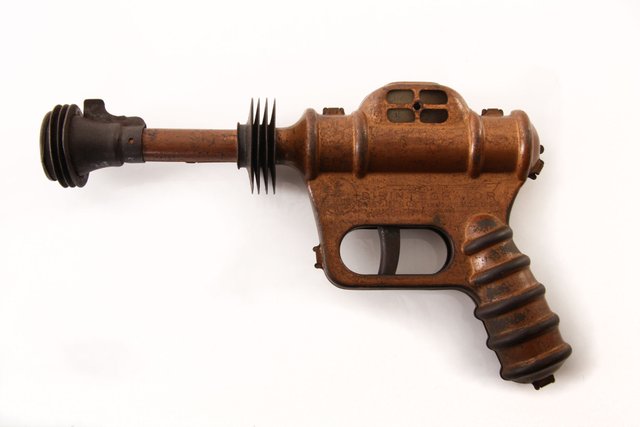
Buck Rogers is a fictional space opera character created by Philip Francis Nowlan in the novella, Armageddon 2419 A.D. Later the story was adapted into a comic strip, making its first appearance in the newspaper in january 1929.
The first Buck Rogers toys appeared in 1933, four years after the newspaper strip debuted. Some mark this as the beginning of modern character based licensed merchandising, in that not only was character's name and image were branded on many unrelated products but also on many items of merchandise unique to or directly inspired by that character. Of the many toys associated with Buck Rogers, none is more closely identified with the franchise than the eponymous toy rayguns.
The first "Buck Rogers gun" wasn't technically a raygun, although its futuristic shape and distinctive lines set the pattern for all "space guns" that would follow. The XZ-31 Rocket Pistol, a 9½-inch pop gun that produced a distinctive "zap!" sound, was at the American Toy Fair in February 1934. Retailed for 50¢, which was by no means inexpensive during the Great Depression, it was designed to mimic the rocket pistols seen in the comic strips from their inception. In the comics, they were automatic pistols that fired explosive rockets instead of bullets, each round as effective as a 20th-century hand grenade.
Thank you very much for reading and don't forget to follow me for more updates! Next time: 1940-1949!
I do not own any of the pictures used in this article.
Who is Mande Walschot?
Mande Walschot resides in Belgium and currently owns over 1,360 boxed My Little Ponies, around 500 boxed dolls, over 70 polly pockets, 40 plush care bears, 30 Tsum Tsums, about 3,000 Pokémon cards, around 200 comic books and lots of stuffed toys! Gemr spotlight collection
Also seen on national television and newspapers.
That Buck Rogers gun is so cool!
Hi @mevilkingdon, I just stopped back to let you know your post was one of my favourite reads yesterday and I included it in my Steemit Ramble. You can read what I wrote about your post here.
Great work! Love the effort you put into these
We had of course monopoly, it was required in order to maintain US citizenship, haha. We also had that sock puppet floating around the house, I think one of our dogs finally ate it. Thanks for the post.
Also had monopoly, just like everyone else. And a 'modern' view-master, together with 'modern' fisher-price. Never had a sock monkey though :(
Hello @mevilkingdom,
It gives us pleasure to inform you that this post have been upvoted by Project Better.
The Mission of Project Better is to reward posts have many votes from Minnows but earn pennies.
Your payout is $0.002 before we vote on your post.
Learn more about the Project Better here!
We hope to see you continuing to post some great stuff on Steemit!
Good luck!
~BETTER~
I was lucky I wasn't a kid before the 1980s...
Why's that? :-)
Because toys before were so boring then...:-}
This post has been linked to from another place on Steem.
Learn more about and upvote to support linkback bot v0.5. Flag this comment if you don't want the bot to continue posting linkbacks for your posts.
Built by @ontofractal